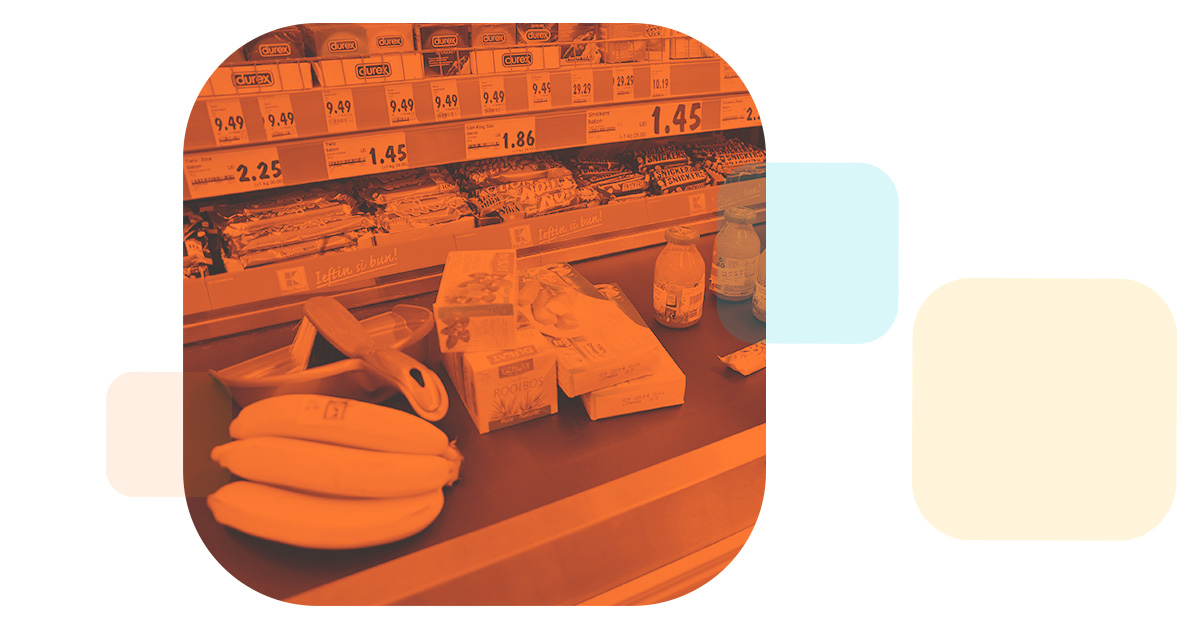What Grocery Store Innovation Does Healthcare Supply Chain Use Every Day?

This week marked the forty-second birthday of a technology without which modern healthcare would be impossible.
Although this isn't strictly-speaking a medical advancement - and its current implementation barely bears any resemblance to its original form - so much about the way that healthcare providers operate is organized around a technology that debuted in Troy, Ohio on June 26, 1974. As the store was opening, an employee ran a pack of Juicy Fruit gum across a laser that collected product information from a small sticker:
The first barcode.
The man most personally responsible for the invention of the barcode - Norman Joseph Woodland, known to his friends just as Joe - was astonishingly ahead of his time. He first filed a patent for a barcode machine in 1949, a time where the technology was possible but not feasible. Printing methods weren't reliable enough to make great labels, and no light source was powerful enough to read the labels and small enough to be practical.
Encoding product information turned out to be the easy part, even though that aspect of inventory management continues to be one that challenges healthcare supply chain pros to this day.
Joe Woodland was confident that his invention could revolutionize commerce - and he was right - but he needed someone else's innovation to make his possible.
The laser will have its sixty-second birthday in just a couple of weeks. As you may have figured out, 1960 is not the same year as 1974. Combining this directed beam of light brighter than the center of the sun with a simplified visual code that corresponded to a product catalog took Woodland, RCA, and other visionary developers nearly fourteen years. But they, too, were convinced that this would be successful and lead to big business for supermarkets.
And somehow, despite its grandiosity, they were too narrow-minded in their vision.
The original barcode took the familiar lines and spun them around into a circle. While this bullseye design was easier to read from any angle and was a neat visual reminder of the accuracy that they wanted to promote, the labels were clunky, so we ended up with the horizontal blocks that you know and love today.
And the developers could not have anticipated that the laser would ever become unnecessary to the scanning process.
The fact that you can currently find such a wide variety of scannable codes (UPC, NDC, GS1, QR) is the result of moving from scanning to photographing labels. When you point a modern scanning device at a code, the device is comparing a captured image against a list of similar images to see if it recognizes anything. In some ways modern scanning has less in common with grocery store scanners than it does with the Nintendo classic Duck Hunt.
If it wasn't clear where this blog was headed before, let's zap right to the point: Z5 Inventory's mobile app is equipped to scan any label you want it to.
Because it's available on all Apple and Android devices, it's equipped with all the scanning capabilities built into the device you use every day. Because of Z5's massive database of medical and pharmaceutical product information, the device you use every day can recognize the product that you use every day. And because of GS1 standards and the capability within the app to create your own custom QR codes, all the important information on your product will pop up automatically.
No more searching for expiration dates. No more confusion about the exact shelf where product is stored. And please - PLEASE - no more handwritten notes about product that has to be typed into a spreadsheet later.
Not only does embedded product information improve the speed and accuracy of the physical inventory process during an annual or cycle count, but it also makes possible high-level inventory management tasks like expiration avoidance and reallocation based on usage history.
So raise a glass to Joe Woodland and his fellow visionaries this week. And while you do, think about the ways in which you might improve the medical supply chain and what you need to make it happen. (We think the Z5 Inventory app and online dashboard will probably be a huge help, but we're obviously biased.)
Most of the historical information in this blog was found in Smithsonian Magazine's article about the barcode. Give it a read to see how going to the beach was surprisingly crucial to the development of the modern supply chain.


